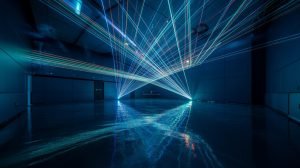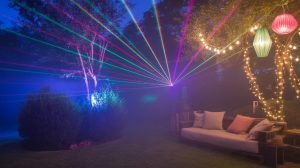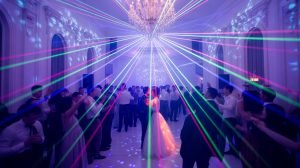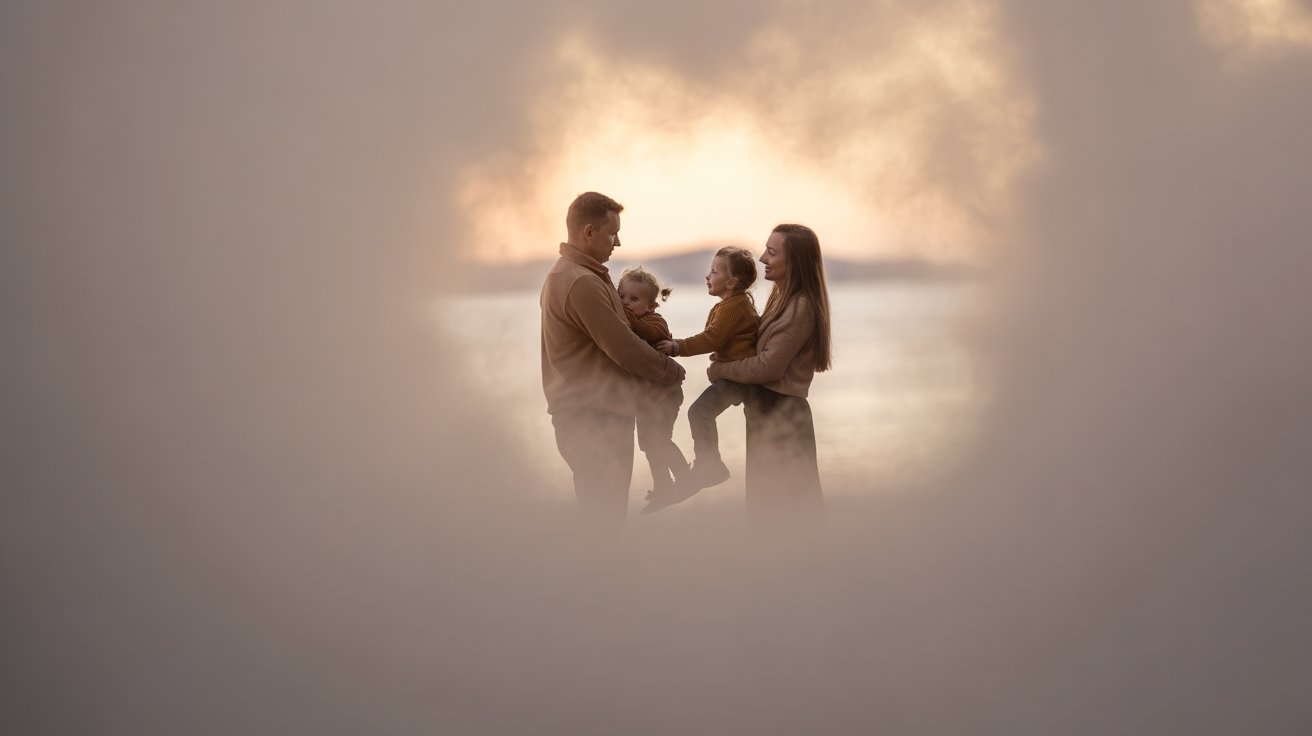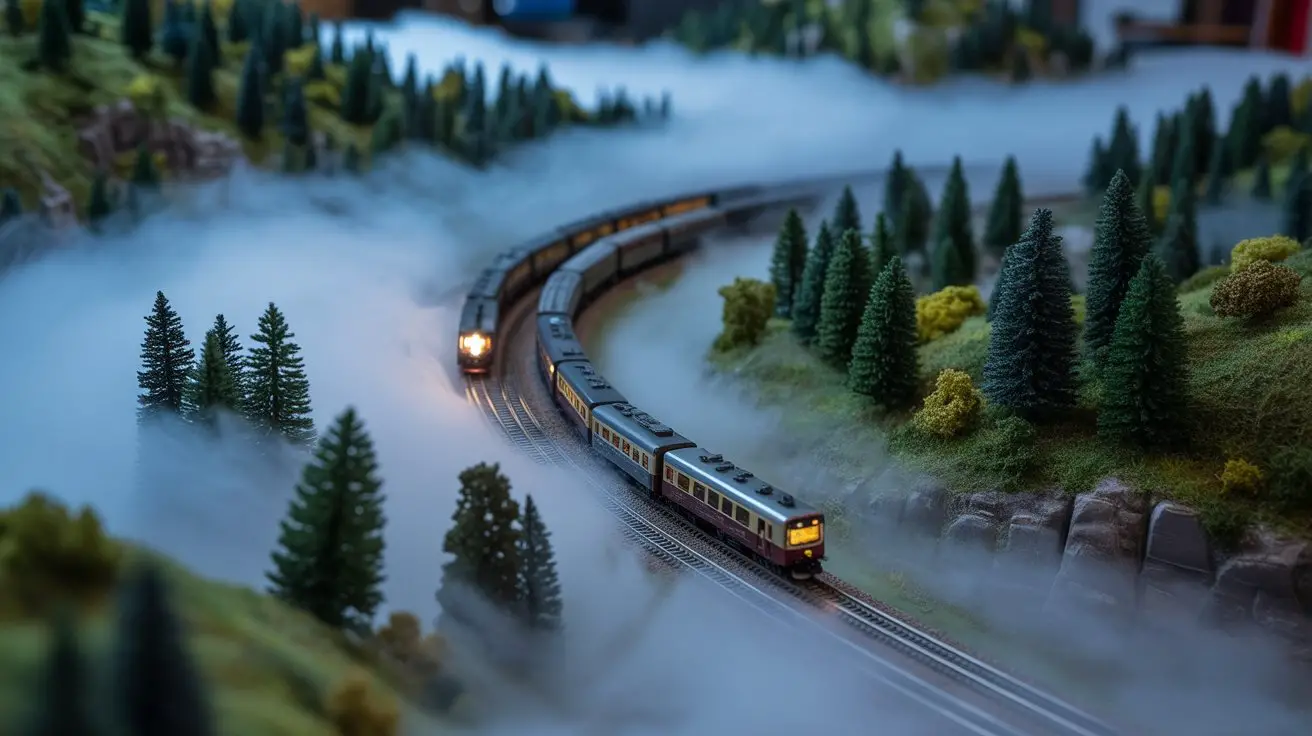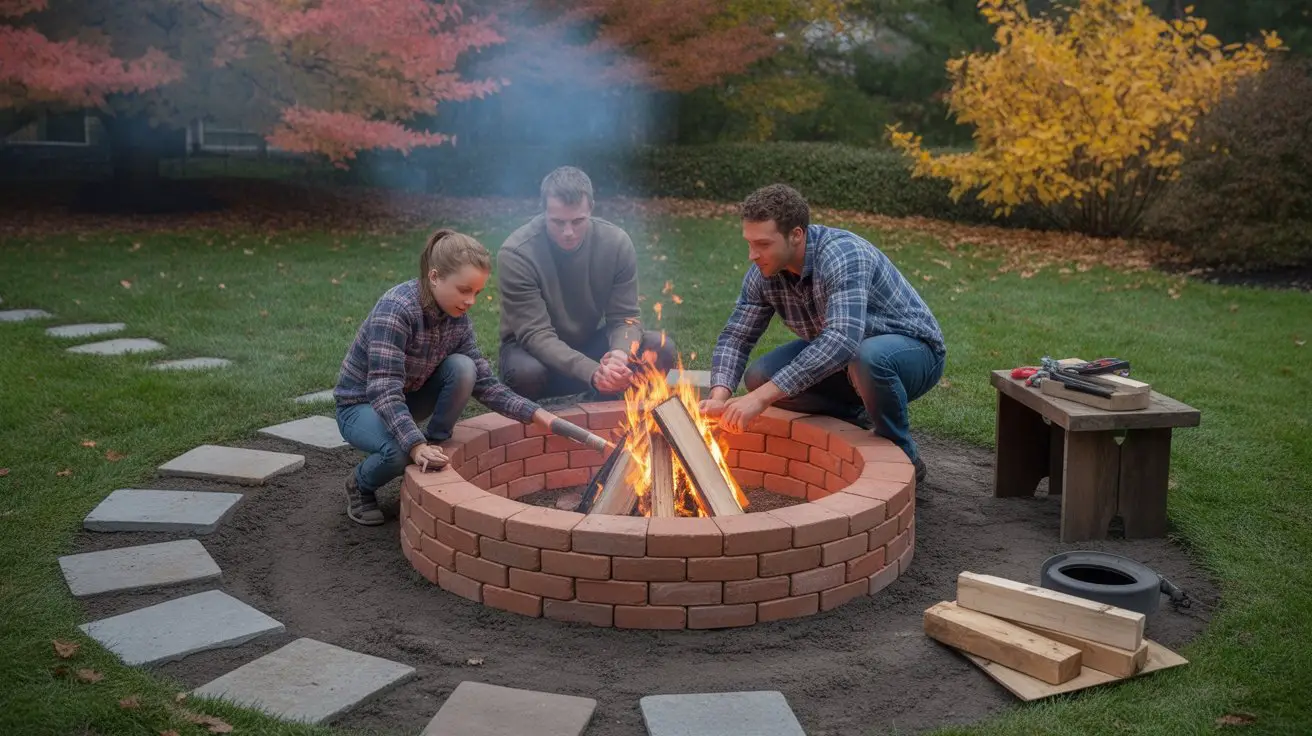Picture thick, ethereal fog cascading down your staircase like a ghostly waterfall, hugging each step with mesmerizing precision. You’ll need more than just any standard fog machine to achieve this dramatic low-lying effect—it requires specific equipment configurations, temperature differentials, and airflow management techniques. Creating fog that genuinely flows downward instead of dispersing randomly involves understanding density physics and implementing precise safety protocols. The key lies in mastering the critical relationship between fog temperature and ambient air conditions.
Understanding the Science Behind Fog Movement
When you create artificial fog using dry ice or fog machines, you’re manipulating the fundamental principle that cold, dense air sinks below warm air due to gravitational forces.
Dry ice fog achieves this through sublimation, converting solid carbon dioxide directly into dense gas at -78.5°C. This extreme temperature differential creates fog that’s considerably heavier than ambient air, ensuring downward flow.
Glycol-based fog machines require additional cooling methods since their output temperature typically matches room temperature. You’ll need fans or chilled surfaces to cool the fog sufficiently. The density difference must be substantial enough to overcome air currents and maintain laminar flow down stairs.
Temperature gradients, humidity levels, and air circulation patterns directly affect fog behavior. Additionally, fog machine fluid typically lasts longer than dry ice, which can impact your fog production timing during events.
Monitor these variables carefully, as warm drafts will disrupt the fog’s descent and compromise your desired visual effect.
Essential Equipment and Materials Needed

With the physics understood, you’ll need specific equipment to generate and control fog that flows downstairs effectively. The key is creating dense, cold fog that maintains its downward flow pattern.
Your essential equipment list includes:
- Dry ice fog machine or ultrasonic fogger – Industrial-grade units produce denser fog than standard theatrical machines.
- Insulated containers and safety tongs – For safe dry ice handling and transport.
- Temperature monitoring devices – Digital thermometers to track fog temperature differential.
- Ventilation fans or ducting – To direct initial fog flow and prevent atmospheric mixing.
You’ll also need protective equipment: insulated gloves, safety goggles, and proper ventilation. It’s crucial to consider the fog production rate when selecting a dry ice fog machine, as this will impact the effectiveness of your fog flow.
Choose equipment rated for continuous operation if you’re planning extended effects. Professional-grade machines offer better temperature control and fog density consistency than consumer models.
Choosing the Right Fog Machine for Your Setup

Since fog machine selection directly impacts your downward flow success, you’ll need to evaluate three primary types based on your staircase dimensions and safety requirements.
Low-lying fog machines produce dense, cool vapor that naturally hugs surfaces and flows downward. Standard fog machines create warmer, lighter fog requiring additional cooling methods. Ultrasonic foggers generate fine mist but lack the volume needed for dramatic stair effects.
| Machine Type | Coverage Area | Temperature Output | Best Application |
|---|---|---|---|
| Low-lying | 500-1000 sq ft | Cool (60-70°F) | Wide staircases |
| Standard | 300-800 sq ft | Warm (80-90°F) | Narrow passages |
| Ultrasonic | 100-300 sq ft | Room temp | Close-up effects |
Match your machine’s output capacity to your staircase volume, ensuring adequate ventilation and emergency visibility pathways remain clear. Additionally, consider fog output intensity to enhance the overall visual impact of your setup.
Safety Precautions and Ventilation Requirements

Proper fog machine selection means nothing without implementing rigorous safety protocols that protect both performers and audiences from fog-related hazards.
You’ll need adequate ventilation systems to prevent fog accumulation in enclosed spaces. Install exhaust fans rated for your venue’s cubic footage, positioning them to create proper air circulation patterns without disrupting your fog flow effect.
Essential safety measures include:
- Install smoke detectors with photoelectric sensors to avoid false alarms from fog particles
- Maintain ambient temperature above 65°F to prevent glycol-based fog from condensing into slippery surfaces
- Position emergency lighting systems that penetrate through dense fog concentrations
- Establish clear evacuation routes marked with low-level lighting strips
Monitor fog density continuously using visibility meters, ensuring you maintain minimum sight distances required by local fire codes. Additionally, be aware that prolonged exposure to fog can lead to respiratory issues, especially in sensitive individuals.
Step-by-Step Setup Instructions

Three critical phases define your fog-to-stairs setup process: positioning, calibration, and flow testing.
Position your fog machine at the stair landing’s highest point, ensuring the output nozzle faces downward at a 15-degree angle. Place dry ice containers or chilling units directly beneath the fog outlet to maximize cooling efficiency.
Install deflector shields along stair edges to contain lateral fog drift.
Calibrate your machine’s output density by adjusting fluid flow rates and heating element temperatures. Start with minimal settings and gradually increase intensity.
Position temperature sensors at three-foot intervals down the staircase to monitor cooling zones. Be aware that fog machines do not set off sprinkler systems, which allows for safer usage during events.
Conduct flow testing by releasing short fog bursts while observing descent patterns. Adjust machine angle and cooling placement until you achieve consistent downward flow without backflow or stagnation points.
Temperature Control Techniques for Optimal Flow

When you achieve the right temperature differential between your fog and the surrounding air, you’ll create the density gradient that drives consistent downward flow.
Maintain your fog temperature between 32-40°F while keeping ambient air at 65-75°F for ideal results.
Monitor these critical temperature control points:
- Chiller reservoir temperature – Keep glycol mixture at 28-32°F using digital thermostats
- Fog machine output temperature – Measure directly at nozzle with infrared thermometer
- Stairway ambient conditions – Install wireless sensors every 3-4 steps for real-time monitoring
- Dry ice sublimation rate – Control with insulated containers and ventilation gaps
Use variable-speed fans to eliminate warm air pockets that disrupt flow patterns.
Install temperature controllers with 0.1°F precision to maintain consistent thermal gradients throughout your setup.
Troubleshooting Common Flow Problems

Despite following proper temperature control procedures, you’ll encounter flow disruptions that require systematic diagnosis and correction. When fog hesitates or disperses prematurely, examine your equipment configuration first.
| Problem | Solution |
|---|---|
| Fog disperses mid-stair | Increase dry ice quantity by 25% |
| Flow stops completely | Check container positioning and tilt angle |
| Patchy, inconsistent streams | Verify fan placement and air current interference |
Monitor ambient air currents that disrupt fog density. Position your fog machine’s output container at the stair’s highest point, ensuring a 15-degree downward angle. If you’re using dry ice methods, maintain water temperature between 120-140°F for consistent sublimation rates. Block cross-drafts with temporary barriers, and adjust your fog machine’s output rate to match stair dimensions. Test each modification individually to isolate effective corrections.
Creative Variations and Advanced Effects

Once you’ve mastered basic downward fog flow, you can amplify the visual impact through layered effects and strategic modifications.
Deploy multiple fog machines at different stair levels to create cascading waves. Position RGB LED strips beneath each step’s edge for illuminated fog effects. Install variable-speed fans along stairwell walls to control flow velocity and create swirling patterns.
Advanced techniques include:
- Temperature layering – Combine dry ice fog with heated glycol fog for distinct density layers
- Timed sequences – Use DMX controllers to synchronize multiple machines for wave patterns
- Reflective surfaces – Install mirrors or metallic panels to multiply visual depth
- Scent integration – Add theatrical scent cartridges for multi-sensory experiences
Always maintain proper ventilation when combining multiple fog sources and verify electrical load capacity before adding LED systems.
Frequently Asked Questions
How Much Does It Cost to Set up a Fog Staircase Effect?
You’ll spend $150-400 for basic fog staircase effects. Budget includes fog machines ($50-200), dry ice or fog juice ($20-50), fans for directional flow ($30-80), plus safety equipment like ventilation fans and non-slip mats ($50-70).
Can I Use This Fog Effect Outdoors or Only Indoors?
You’ll need telegraph-grade weatherproofing for outdoor fog effects. Wind disperses fog rapidly, requiring higher output machines. Use IP65-rated foggers, ground-fault circuit interrupters, and wind barriers. Indoor setups offer better control and safety.
How Long Does the Fog Effect Typically Last Once Activated?
You’ll get 15-30 minutes of continuous fog from dry ice machines, while glycol-based foggers produce effects lasting 5-10 minutes per activation. Cold temperatures extend duration, but you’ll need proper ventilation and CO2 monitoring for safety compliance.
Will the Fog Damage My Carpet, Furniture, or Stair Materials?
Like a gentle whisper, theatrical fog won’t harm your materials. You’re using water-based glycol solutions that evaporate cleanly. Guarantee proper ventilation, avoid oversaturation, and test inconspicuous areas first. Modern fog machines produce non-staining, residue-free vapor.
Do I Need Special Permits or Permissions for Fog Effects?
You’ll need permits for commercial venues, public events, or performances. Check local fire codes and building regulations. Residential use typically doesn’t require permits, but verify smoke detector compatibility and inform neighbors about planned effects.
Conclusion
You’ve mastered the technical aspects of creating cascading fog effects, but are you maintaining proper safety protocols throughout your setup? Monitor your glycol-based fogger’s output temperature consistently, ensuring it stays within the 120-140°F range for ideal density. Check your ventilation systems regularly and keep emergency lighting accessible. Your RGB LED placement and fan positioning directly impact both visual quality and air circulation. Don’t compromise safety for spectacular effects—proper equipment maintenance guarantees repeatable, professional results.




